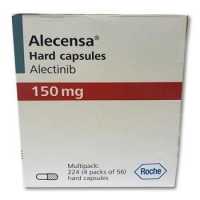Anti-cancer drugs
Cancer is a disease that starts with a mutation when the body cell (a somatic cell, that is, not a sexual cell) begins to divide / grow uncontrollably. Normal cells of the body work on their internal clock with a working mechanism. These internal clocks regulate, for example, at what point the cell divides, grows and matures, ages and / or dies, that is, all those natural processes that make up the cell's life cycle - the so-called cell cycle. In a cancer cell, this regulatory mechanism is damaged.
In Europe, children and young people under the age of twenty fall ill with cancer rarely. Of all diseases, cancer accounts for only one percent in childhood and adolescence.
Theoretically, any cell in the body can break down and become cancerous. That is why both adults and children have so many different forms of cancer. Depending on the type of cells, how many and which organs are affected, the disease manifests itself in various symptoms. Different forms of cancer should be treated differently, and the chances of recovery are also differently evaluated. In some oncological diseases in childhood and adolescence, the first cell mutation began, as doctors think, even before the birth of a child.
Good to know: Cancer in the younger generation to 20 years in Europe is very rare. This is only 1 percent of all diseases in children and adolescents.
If cancer occurs in the hematopoietic system (bone marrow), then it proceeds in the form of leukemia, or if the lymphatic system is affected (for example, spleen, lymph nodes), then they talk about lymphoma (lymphoma). Since in both cases the diseases cover the whole body completely, experts call them systemic (systemic disease). Cancer can also appear as a solid tumor in the internal organs. Depending on the specific tissue in which it originated, it is called sarcoma (from degenerated nervous, connective or supporting tissue, for example, in bones, cartilage, muscles) or carcinoma (mutated cells on the surface / walls of organs or glands). In addition, in childhood and adolescence, embryonic (embryonic) tumors are quite common, they are called blastomas. They arise from completely immature cells or from cells that have barely begun to mature (undifferentiated) when the tissues and organs are in the maturation stage. Therefore, the tumor tissue cannot be classified / attributed to any particular type of tissue.
Typical for cancer cells is that they grow and divide quickly and uncontrollably, regardless of what type of cells or tissue they originate from. At the same time, they inherit information from their daughter cells, which are dangerous for a healthy body. As a rule, they are not able to fulfill their own particular purpose / function. Instead, penetrating into healthy tissue and / or displacing it, tumor cells destroy the tissue itself and disrupt its normal operation. In addition, cancer cells can leave the place of their origin and get through the vessels of the circulatory and / or lymphatic system [lymphatic system] to other parts of the body, forming daughter foci (metastases). Therefore, at the time of making a diagnosis of cancer, it is necessary to proceed from the fact that the body has the smallest daughter tumor foci (so-called micro-metastases), even if they are almost impossible to detect using standard examination methods.
Therefore, it is not enough to treat only the visible tumor. From the very beginning, treatment in parallel should be directed to invisible metastases, in other words, systemic [systemic] treatment is carried out. No matter from which cell the cancer originally came from, it almost always affects the entire body.
It is because of these properties / qualities that are aggressive, dangerous for the whole organism, and therefore life-threatening, oncological diseases are also called malignant. Buy Anti-cancer drugs from India | Cancer treatment Price Medicine

